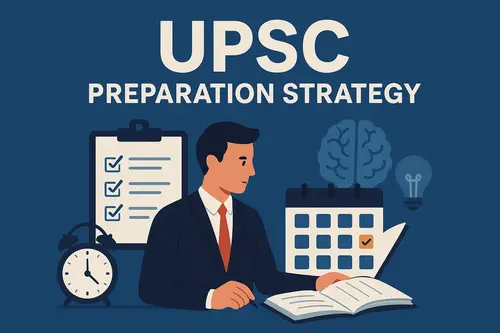
Introduction
“Equality before the law is a constitutional guarantee, but do we understand equality as treating everyone equally or is it really about elevating those who are disadvantaged?“
This is the fundamental question underlying Article 15 of the Constitution of India. It is the third provision which provides for an absolute prohibition of discrimination on the grounds of religion, race, caste, sex or place of birth. However, Article 15 not only prohibits – over the decades amendments to this provision and sublime turns from the highest court of our land provide the basis for positive discrimination – or what we term reservations.
The issue resurfaced in the news again with a flurry of news stories relating to the uncovering of UPSC aspirants who used false caste and EWS (Economically Weaker Section) certificates which allowed them to gain an illegitimate advantage through reservations. These instances have sparked the debate around whether we are witnessing the abuse of reservations? Is the system failing genuine candidates? Or is it merely reflective of flaws of implementation – not flaws in the principle?
Background to Article 15
Article 15 sits under the Right to Equality (Articles 14–18) in Part III of the Constitution. While Article 14 guarantees equality before the law, Article 15 narrows this guarantee and targets discrimination mainly in the social and educational arena.
It states the following in each of its sub-clauses:
Article 15(1): The State will not discriminate against any citizen on grounds of religion, race, caste, sex, or place of birth.
Article 15(2): No citizen shall be denied access to shops, hotels, public restaurants, wells, tanks, bathing ghats, or other public places funded either fully or partly by the State.
Article 15(3): Special provisions may be made for women and children.
Article 15(4): Added by the 1st Constitutional Amendment (1951) – provides that the State may make special provisions for the advancement of socially and educationally backwards classes (SEBCs), SCs, and STs;
Article 15(5): Added by the 93rd Amendment (2005) – allows reservations in educational institutions (not private or minority)
Article 15(6): Added by the 103rd Amendment (2019) – provides up to 10% reservation for Economically Weaker Sections (EWS), in educational institutions (not private or minority)
Beyond Article 15 Reservations
Article 15 provides a constitutionally articulated idea of social equality. However, reservations in India are not limited to Article 15. The Constitution expands this idea, and actively encourages quotas in both public employment and legislative representation, making sure that groups who face disadvantages have fair representation in various parts of governance.
Article 16 – Equality in Public Employment
The Constitution guarantees the right to equal employment in public jobs and prohibits discrimination based on religion, race, caste, sex, descent, place of birth, or residence.
However, there is a provision in favour of reservations in appointments for backward classes, SCs, and STs to ensure their adequacy in representation in government services.
This forms the basis for the 27% OBC quota and other existing quotas for SC/ST in government employment.
Legislative Reservations (Articles 330-334)
The Constitution also provides provisions for political reservations.
- Article 330 : reservation for SCs and STs in Lok Sabha based on population.
- Article 330 A : (106th Amendment 2023 – 33% for women in Lok Sabha) to be implemented after delimitation.
- Article 331 : (discontinued by 104th Amendment (2019) ) permitted the President to nominate 2 Anglo-Indians to Lok Sabha.
- Article 332 : reservation for SCs and STs in State Legislative Assemblies.
- Article 332 A : (also by the 106th Amendment – 33% reservation for women in State Assemblies) to be implemented after delimitation.
- Article 333 : (also discontinued by 104th Amendment ) permitted nomination of 1 Anglo-Indian to State Assembly.
- Article 334 : the reservation in legislatures was meant to be for 10 years and has been extended every 10 years since independence.
- Article 335 – Administrative Efficiency
States that claims of SCs and STs in services be taken into account but not at the cost of administrative efficiency
The Amendments to Article 15
The features and scope of Article 15 have grown over time through the operation of Constitutional Amendments. These developments demonstrate India’s attempts at reconciling equality with social justice.
1st Constitutional Amendment Act (1951)
- Inserted Article 15(4).
- Permitted the State to make special provisions for socially and educationally backward classes (SEBCs), and SCs/STs.
- This is in response to the decision in Champakam Dorairajan case (1951) which struck down caste based reservations.
93rd Constitutional Amendment Act,(2005)
- Inserted Article 15(5).
- Permitted reservations for backward classes in educational institutions (including private aided or unaided), with the exception of minority institutions.
- This extended opportunities in higher education for backward classes and SC/ST students.
103rd Constitutional Amendment Act, 2019
- Inserted Article 15(6).
- Permitted up to 10% reservation for Economically Weaker Sections (EWS) in educational institutions.
- By introducing an economic basis (apart from caste/community) for affirmative action, the Amendment represented a shift.
- In 2022, SC upheld this Amendment Janhit Abhiyan v. Union of India (2022), it would become a classic case in reservation jurisprudence.
Read full Supreme Court EWS Judgment (2022)
Important Supreme Court Decisions on Article 15 & Reservations
The role of the judiciary has been critically important to discerning how Article 15 has been applied. Here are some of the important decisions:
(a) State of Madras v. Champakam Dorairajan (1951).
The first case of prominence and the first case to evaluate reservations. The Supreme Court struck down the caste-based reservations existing for admissions in educational institutions stating that such reservations are unconstitutional under Article 29(2) – right against discrimination in educational institutions. This judgment influenced Parliament which enacted the 1st CAA, 1951, which introduced Article 15(4) with respect to reservations.
(b) M.R. Balaji v. State of Mysore (1963)
The Court observed that reservations must be reasonable. It stated that the reservations should not exceed more than 50% of the total available seats. The Court also introduced the phrase “educationally and socially backward classes” which combined backwardness as a social + educational test.
(c) Indra Sawhney v. Union of India (1992) – The Mandal Commission Case
The decision upheld the 27% OBC reservation in central services. The Court discussed the principle of “creamy layer” → meaning that the advanced sections of OBCs should be excluded. They also stated that the total reservation cannot exceed numbers up to 50%. The Court ruled that reservation cannot be made applicable to promotions (Although this decision has been modified by subsequent constitutional amendments).
(d) Ashoka Kumar Thakur v. Union of India (2008)
The Court upheld the 27% OBC reservation in higher educational institutions under Article 15(5). It re-iterated that the exclusion of the creamy layer is necessary even when it comes to education.
(e) Janhit Abhiyan v. Union of India (2022)
The decision upheld the 103rd CAA (2019) which introduced the 10% EWS quota. This decision is historic because at long last for the first time
Rationale of Reservations in India
Reservation was introduced to atone for the historical injustice India has inflicted on the Dalits, tribals and backward classes. Caste discrimination resulted in the denial of access to education, employment, entry into public domains, the ability to own property, and even have a sense of security as citizens of India.
Historical Disadvantage: The centuries of being consistently and distinctly excluded meant that without remedial action designed to right the status quo, it rendered equality meaningless.
Form vs Substance:
Substantive equality: Providing support to persons who require it to enable them to be equal.
Positive discrimination: Reservations are not “special privileges” but measures to secure equality after centuries of being denied equal status.
Challenges and misuse
- Fake certificates in UPSC
- Verification process and gaps
- Ethical concern: The act of fraudulent candidates replacing genuine claimants dilutes meaning of positive discrimination to recognize social justice.
- Weak centralised verification
- Manipulation of political agenda
- Creamy layer debate: The creamy layer status is primarily applied to the OBC, but there is demand from the SC/ST advocates to apply it to the SC/ST category also.
- EWS status: EWS status is ambiguous and I saw numerous loop holes exists to permit dishonourable affluent families to benefit.
WAY FORWARD
Addressing abuses of citizenship by disingenuous requests from candidates and strengthening these systems from within will require a few medium size policy responses:
- Centralized Digital Verification of Certificates: There should be a national digital verification portal for all caste/EWS certificates and subsequent verification systems, which uses Aadhaar, and can be standardized by all Indian states regardless of their regions.
- Strict Penalties: Introduce strict penalties, such as permanent disqualification from any examination, jail terms, and exorbitant fines, to people who are caught using false certificates.
- Review Reserve Criteria Regularly: Reservation policies must be reviewed regularly to ensure they are targeting the truly disadvantaged and to be adapted to the ever-changing socio-economic situations.
- Ethics in Civil Service Exams: UPSC necessity to focus ethics, commitment and accountability during both exam and training, so that aspirants know that the system rests on trust and fairness.
These steps will not only protect the essence of Article 15, but will restore faith in the reservation system.
CONCLUSION
At its core Article 15 meant “Equality with Justice.” It should be understood, that being equal requires more than mere equal words; however, requires equal action to uplift the left behind.
Reservations are Not Political giveaways; they are empowerment tools meant to reverse centuries of systemic discriminations. However, by misuse, (false caste and EWS certificates) we suffocate our community and weaken the system unwillingly and weaken faith in the system.
For India to progress, we need to ensure that reservation’s benefits only reach the deserving member of society. Then, only can Article 15 become more than just a promise of equal before law, but a promise for justice in real life.

